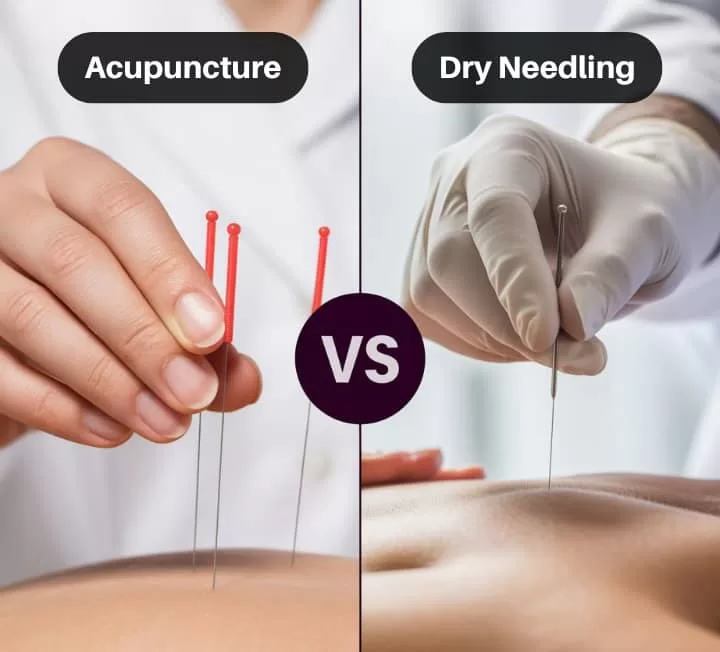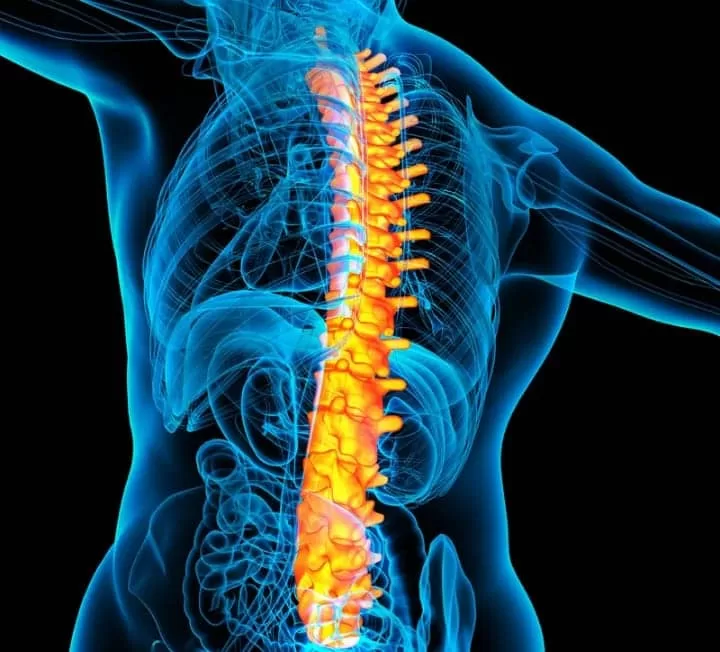If you know anything about dry needling and acupuncture, it’s probably the needles — specifically, those inserted into your skin. But you might be surprised to learn that, aside from that, the difference between dry needling and acupuncture is significant. These are two distinct practices, varying widely in their origins, purposes, techniques, the number of needles used, and the duration of treatment sessions. Clinical Rehabilitation Manager Adam Kimberly, PT, DPT, OCS, breaks down the difference between dry needling and acupuncture, explaining what each method involves and how they may benefit your health.
Dry Needling vs. Acupuncture
While both techniques involve the insertion of thin needles, the intent, application, and training required for dry needling versus acupuncture are distinct. Dry needling is typically used by physical therapists and focuses on relieving musculoskeletal pain and trigger points by targeting specific muscle tissues. It’s based on modern Western anatomical and neurophysiological principles.
In contrast, acupuncture is a component of Traditional Chinese Medicine (TCM) that seeks to restore balance in the body’s energy flow, or “qi,” by stimulating specific points along energy meridians. Practitioners of acupuncture undergo specialized training in Eastern medical philosophy and often treat a wide range of physical, emotional, and internal conditions—not just pain.
These differences reflect not only the contrasting philosophies behind each approach but also their intended outcomes and areas of effectiveness.
Origins of the Practices
Acupuncture dates back thousands of years to ancient China and is based on TCM principles. Dry needling, by contrast, is a relatively modern, science-based practice developed in the 20th century. It emerged from Western medicine and is closely tied to physical therapy and pain management.
Where Do the Needles Go?
In acupuncture, needles are inserted along specific meridian points related to internal organs and energy channels. In dry needling, the practitioner targets myofascial trigger points—tight, irritable spots in muscles—to release tension and reduce pain.
Techniques and Needle Insertion
Acupuncture typically involves shallow insertion with the goal of balancing energy. Dry needling uses deeper, targeted insertion directly into muscle knots or trigger points. The sensation experienced by patients can differ significantly between the two.
What Conditions Do They Treat?
Acupuncture is commonly used for a broad range of conditions, including stress, digestive issues, migraines, and chronic pain. Dry needling is more narrowly focused on neuromuscular and skeletal pain such as back pain, tendonitis, and sports injuries.
Training and Certification Differences
Acupuncturists undergo extensive training in Traditional Chinese Medicine, often over several years. Physical therapists practicing dry needling typically take postgraduate certification courses after earning a physical therapy degree. The length and depth of training differ considerably.
Pain and Sensation During Treatment
Many people describe acupuncture as painless or relaxing, with minimal discomfort. Dry needling, on the other hand, may cause a twitch response or mild soreness, which is considered a therapeutic reaction.
Risks of Acupuncture and Dry Needling
Both procedures are considered safe when performed by trained professionals. However, potential side effects include bruising, soreness, and in rare cases, infection. Dry needling may carry a slightly higher risk of muscle soreness post-treatment due to deeper needle insertion.
Recovery and Results
Acupuncture may require several sessions to see gradual improvement, particularly for systemic conditions. Dry needling often delivers quicker relief from localized muscle pain and tightness, though multiple sessions may still be recommended.
Choosing the Right Treatment for You
The best treatment depends on your symptoms, goals, and personal preference. Those seeking relief from muscle pain or mobility issues might benefit more from dry needling. If you’re looking for holistic treatment of stress, energy imbalance, or chronic systemic issues, acupuncture could be the better fit.
Final Thoughts
Though dry needling and acupuncture both use needles, their philosophies, goals, and applications are fundamentally different. Understanding the difference between dry needling and acupuncture can help you choose the most appropriate therapy for your needs. Always consult a licensed healthcare provider to determine which method aligns best with your health condition.
FAQs: Difference Between Dry Needling and Acupuncture
1. What is the main difference between dry needling and acupuncture?
Dry needling is based on Western medicine and targets muscle trigger points to relieve pain and improve function. Acupuncture, rooted in Traditional Chinese Medicine, focuses on balancing the body’s energy flow (qi) through meridians to treat a range of conditions.
2. Do dry needling and acupuncture use the same type of needles?
Yes, both use very thin, solid, stainless steel needles. However, how and where they are inserted differs based on the technique and purpose.
3. Who performs dry needling vs. acupuncture?
Dry needling is typically performed by physical therapists or other healthcare professionals trained in musculoskeletal anatomy. Acupuncture is performed by licensed acupuncturists trained in Traditional Chinese Medicine.
4. Is one treatment more effective than the other?
Effectiveness depends on the condition being treated. Dry needling is often preferred for muscle pain and tightness, while acupuncture may be used for a wider variety of physical and emotional health concerns.
5. Are there any side effects or risks with either technique?
Both techniques are generally safe when performed by trained professionals. Mild side effects may include soreness, slight bleeding, or bruising at the needle site.
6. How long does a typical session last?
Dry needling sessions are usually shorter—around 15–30 minutes—focusing on specific muscles. Acupuncture sessions may last 30–60 minutes and often involve a holistic approach to treatment.
7. Can I receive both treatments together?
Yes, some patients benefit from combining both approaches. However, you should consult with your healthcare provider to ensure it’s appropriate for your condition.
8. Is dry needling covered by insurance like acupuncture?
Coverage varies. Acupuncture is more commonly covered under insurance, especially for chronic pain. Dry needling may be included as part of physical therapy benefits. Always check with your provider.





